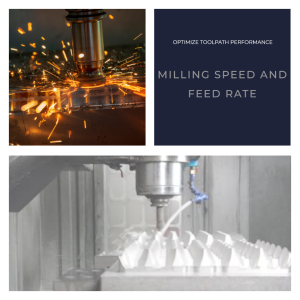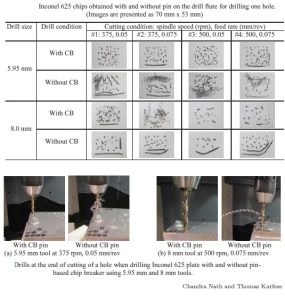Chapter 3: Best Practices for Thread Milling
Proper techniques, parameters and processes are vital for safe, efficient and high quality thread milling operations. This chapter examines speeds and feeds, depth of cut, tool path strategies, coolants, troubleshooting tips and other best practices for optimizing thread milling results.
Speeds and Feeds
Selecting suitable spindle speeds (RPM) and feed rates is critical for good thread milling performance. Follow tool manufacturer recommendations for speed based on material and tool construction. Common starting speeds:
- Steels: 100-200 SFM
- Aluminum: 300-500 SFM
- Hardened alloys: 80-120 SFM
Divide speed by tool diameter to determine RPM. Start at 50% of recommended feed for first pass then increase feed up to optimal amount. Typical feed rates:
- Steels: 8-18 IPM
- Aluminum: 20-30 IPM
- Exotics: 4-8 IPM
Feed rate, IPM = Threads per Inch x Pitch x RPM
Reduce speeds/feeds if chatter, vibration or noise occurs indicating instability or tool strain. Prioritize continuous cuts over maximum material removal to start.
Programmed Depth of Cut
- Roughing pass: 60-75% of thread major diameter
- Finishing pass: 10-20% of thread diameter
- Maximum single pass DOC: 3/16” (5mm)
Take light depths of cut to preserve tool life and avoid deflection. This also gives lubricant time to penetrate. Multiple finishing passes can optimize surface finish.
Coolants and Lubrication
Proper lubrication is critical when thread milling:
- For most steels, use 5-10% oil concentration or synthetic water soluble fluid.
- Aluminum benefits from tapping fluid or synthetic lubricants to prevent built-up edge.
- When possible, flood tool and workpiece interface to improve lubrication and chip evacuation.
- For blind holes, peck drill reservoir holes for additional lubricant storage.
- In ferrous materials, sulfur-based EP additives provide extra pressure resistance.
Insufficient lubrication risks built-up edge, galling, chatter and poor tool life. Ensure constant flow directly to cutting interface.
Entry and Retract Strategies
- Helical entry improves stability and distributes forces more evenly when starting thread.
- For blind holes, reverse tool rotation direction for retract to avoid unwinding threads.
- Extend tool below hole bottom before retracting to disengage cutting edges fully before exit.
- Slow programmed feeds to enter and exit cleanly without rubbing or damage.
Controlled entry and exit protects threads and avoids tool crashes when milling blind hole applications.
Climb vs Conventional Milling
- It depends on geometry of the tool and thread helix or strait flute etc but in general climb milling threads engages the full cutting edge and keeps chips moving away from the work. This improves surface finish and enables higher feeds. It is preferred when possible.
- Conventional milling depends more on tool front clearance geometry. It can rub more on workpiece exit causing rougher finish.
- Conventional milling may allow longer tool life depending on setup rigidity. Climb milling places heavier radial forces on tool.
Tool Path Patterns
Various tool path strategies suit different thread forms and part geometries:
Helical Tool Path – Preferred for most standard 60 degree thread forms. Produces continuous cut with smooth ramp down to full thread depth.
Circular Interpolation – Works for shallow threads or where axial depth is limited. Allows controlling multiple passes and depth precisely.
Spiral Tool Path – Effective for large/deep threads where helical strategy may cause excessive tool load. Gradual engagement reduces forces.
Linear Tool Path – Alternating linear passes between flank faces can generate acme, buttress and other asymmetric thread forms. Allows fewer simultaneous cutting teeth.
Tread Milling Troubleshooting Tips
- Bad surface finish – Increase lubrication flow, reduce feed, ensure sharp cutting edges, use climb milling
- Inaccurate thread size – Check tool parameters match thread specifications, verify zero offsets, replace worn tool
- Chatter or vibration – Reduce feed, ensure stable setup, use shorter tools, increase preload if possible
- Tool breakage – Decrease feed/speed, reduce DOC, check runout, ensure adequate lubrication
Summary of Best Practices
- Select suitable speed and feed rates based on tooling and material factors.
- Take light depths of cut ranging 60-75% thread diameter for roughing.
- Ensure abundant lubrication directly at cutting interface.
- Use helical entry, reverse retract, and controlled speeds.
- Prioritize climb milling strategy when possible for finish.
- Choose path strategy suiting thread form and workpiece geometry.
- Monitor process for chatter, tool wear and finish issues.
Following fundamental good practices for thread milling leads to maximized results and tool life.



